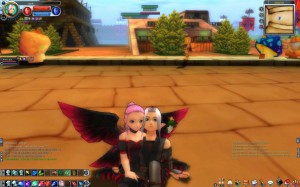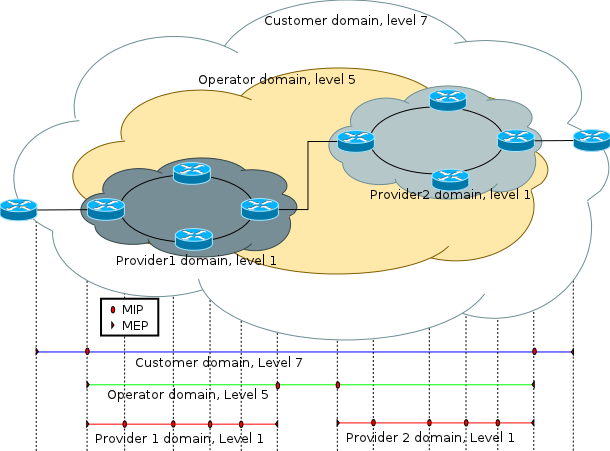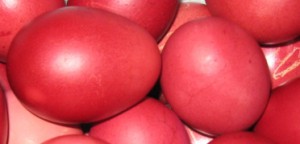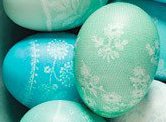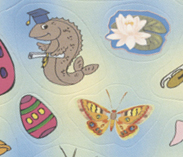I wrote this guide for my guild mates in Redemption, when I was one of the most active players. I miss this time a lot and some day I will return. If you are interested in entering our guild, go to our forum @ Redemption guild and ask for Amy and or Heleen. Or simply enter our academy and level as fast as you can. The game is so addictive that you can kill hours without noticing. In the same time, it can become so annoying, It can make you quit. If you still don’t know what Fiesta online is, go to Gamigo’s web site and have a look.
Contents |
Turning quests
So far, this is the most ordinary and easy way to make some cash. Some of the quests drop Elderine scroll, which you can EASY sell between 2 and 5 silver in Roumen, just opening a shop and waiting a bit.
Grinding Abyss
There is specific dungeons called Abyss. After (or near) level 20, you can enter the first abyss. It is located behind merchant Nina in Elderine. Level 20 abyss gives some nice XP and every monster drops between 1 and 3 useful drops and occasionally some equips you may sell. Free place in inventory. Make kills and collect drops until you are full. Go back to Elderine and sell everything you don’t need for alchemy or can sell to someone for a good price.
Drops you don’t need
All the badges.
All the lumps.
All the bones. They are used only in anti poison/anti disease potions, and you will need about one stack of them once in a while.
All the meats you can’t make to potions immediately. This is the most frequent drop in game. Almost every monster drops it.
All the lucky stones – they are useless and they often FAIL you.
Sell to NPC all of the badges and lumps. Bones and meats can be sold to other players, but the prices are rarely good. The meats are quest item for Ancient templar Maria quests, but the drop rate is good and rarely someone buys them. Lucky stones can be sold 50% higher then ordinary stones to other players who don’t know WHY blessed stones are better. So either NPC them or try opening a shop in front of the Black smith.
Alchemy
This is the best Money making tactics, cause it gives you some Skill points and pretty much lots of money. The first and most easy way to do this:
Lix[1] You need 3 elrue[1] and 3 Low quality copper ores. The first can either be done by learning Stone production and mixing 3 of the 3 types of dusts to elrue[1] or buy the elrues from item merchant Pey in Roumen. The second can be mined from the Copper mine (buy pickaxe from Pey). Either way, mix 150 elrues and 150 copper ores [LQ] to make 50 Lix[1]. Go to Elderine, open a shop in front of the Black smith and sell them at 2 silver per piece and go drink few beers/coffees. If you made the Elrues yourself – those are easy 100 silver, if you bought the elrues from Pey, you still make 60-70 silver profit.
I suggest you make 2 alt characters in plus of your main. One character for Potions and Scroll alchemy. One alt for Comp/Decomp. One alt for stone production. You will never throw any drops away. You will always have something to mix in potion and scrolls and sell it or keep it for further use.
Let’s say you have 2 stacks of LQ Magic crystals and one stack of LQ Meats. This is one of the first recipes for Potions. Mix them all into one stack of Mana potions and give them to your low level cleric. He/she will become a buffed healing machine, and you will not spend money on SP potions. You will not need healing potions and can sell them to someone in need.
The second way is to make scrolls. The starting scroll production is enough. Collect one stack of torn leathers [LQ] and 2 stacks of Summoned Beast Leathers [LQ SBL]. Buy the recipe for Shield scroll [1] from the skill merchant. Mix the scrolls and open a shop. Good price for those scrolls is a bit below 180 copper per scroll. IF YOU BOUGHT the 3 stacks of mats from the item merchant Nina in Elderine, 180 copper per piece is not enough, because you don’t make profit. But don’t raise the price more then 240 copper per unit. No one will buy them at this price.
The best place to sell t1 scrolls is around mayor Roumenus in Roumen. Everyone participating in Kingdom quest will check if there are good buffs sold around before he participates.
Trade
When
Overnight: Open a shop with fair prices and go down to sleep. When you wake up, you may have sold something. The bad part is: You may have sold more items if they get sold quick
Late day: Afternoon is the best tiem. Everyone is back from work or school, everyone is questing, everyone is needing scrolls, potions and equips. The bad part is: This time is EXCELLENT for gaming then selling/buying junk.
Desperate/anytime: You need something sold or bought NOW. Shout it 1-2 times in the city with price and wait for answers. Ordinary shouts are “B> +9 level 40 bow. Whisper me a price” etc. The bad part is: You are desperate and can’t get good price.
Where
Location, location, location! Sell quest items near the quest givers, sell item enchanting stones in front of Blacksmiths, buy materials near the storage – often someone needs space and will sell his mats to you, sell with better prices near someone with higher prices (e.g. An idiot selling elrue [2] @ 3 silver, open a shop beside his and sell it @ 2 silver. I’ve seen the Idiot to break the shop, come buy ALL my elrues and reopen his shop). Open shop with buff scrolls near town exits or Kingdom quest gathering places. Open town scroll shops near Elderine’s exit to Uruga. Keep in mind the ability to buy in every city is measured in copper for Roumen, silver in Elderine and Gold in Uruga. e.g. You can’t expect to sell something for 1 gold in Roumen.
How much
Explore every possible NPC shop, just to check the price and do not try to sell something ordinary for higher price. e.g. You can’t sell elrue[1] for more then 270 copper. If you succeed, please have a picture of the moron who bought it, so I can paint a donkey ears on him.
Common mistake is to try to sell item comp or decomp recipe in shop just because it is a rare drop in abyss. Most of the recipes are sold @ skill merchants. You can’t ask for higher price. e.g. Someone tries to sell Precious pledge comp recipe for 250 silver, when the skill merchant sells it for 30 silver. OTOH there are 3 scroll production recipes for Vitality [2], Speed [2] and Shield [2]. Those recipes can be sold for about 2 gold each.
Equip Item minimal pricing
You found a green? Don’t need it? Want to sell it for profit? Don’t know what price to ask, so you don’t get robbed and don’t wait 3 days for customer?
1. Check the NPC price.
2. Have the good stats doubled and add them to this price.
3. Have the GODLY stats tripled or quadrupled and add them to the price
4. Total this and you have the minimal price you may ask.
What are Good stats?
Fighters use STR, DEX, END, SPR and no INT
Archers use STR, DEX, END, SPR and no INT
Clerics use STR, DEX, END, SPR and no INT
Mages use END, SPR and INT. Some build use DEX and no one uses STR
What are Godly stats?
In short: This is the half the item level in specific stat. Of course no fighter will want Godly INT or mage will not like godly STR. Imagine the item level requirements are for level 70 and it is a fighter sword. Godly stats are +35 on STR and/or END and/or DEX. The tank build would like +35 SPR also for magic defence. If the item is level 80, then godly stat is +40 on any useful stat.
So, to summarize: Level 40 cleric hammer with 20 end, 10 int and 15 str = 35 silver + 60(or 80 godly) silver + 30 silver = 125 to 145 silver (approximate minimal price, with INT stat ignored entirely)
Level 70 archer bow with 35 end, 20 str and 10 int = 420(NPC) + 105(godly) + 40 = 565 silver. (ignore the INT again)
Level 60 mage wand with 30 str, 10 spr and 30 int = 260(NPC) + 20 + 90 (godly) = 370 silver. (ignore the STR, mages don’t benefit from it)
Enchanting Weapons and selling them
If you use talers, this is one way to make quick money. Grab a good green weapon, buy enchantment stones, use your talers to buy protecting stones from item shop for the item level you are about to enchant. Enchant it to +9 and sell it. Depending on the stats of the +9-ed weapon, the prices are like this:
| Level 15-20 – Don’t even bother making those. Noone wants them. Level 30 – 500-600 silver. Level 40 – 1-2 gold. Level 50 – 2.5-3 gold. Level 60 – 3-5 gold. Level 70 – 6-8 gold. Level 80 – Can reach 15 gold, if the stats are good. Level 90 – Don’t know yet. Ask me after the cap raise. |
* Any additional + crit% made from complete licenses can add 5% to the item price. So imagine you have +3% on your level 40 +9 hammer from complete Werebear license (very easy to be done only with the repeatable quest). In this case you may add 15% more to the basic price and sell the weapon in the range 1.2 – 2.3 gold. Add the 4 times the godly stats if any and you easy get 1.4 – 2.5 gold for this hammer.
Boss farming
Easy:
Mutant Wolf is the easiest and lowest of the farmable Boss monsters. He gives some weapons. Can be found in Forest of Mist coordinates D3-D4. Respawns in about 1 hour.
King Boogy is a bit harder, gives random junk. Can be found in Sea of Greed, coordinates F7. Don’t know respawn times and never farmed him.
Kebbing Dreams is 20+ level farming boss. Gives random class specific greens. Can be found in Burning hill, coordinates B3.
Medium:
Goblin King. Can be found in Goblin Camp coordinates I0-I1. Random drops, not very good for farming but gives good XP and respawns often.
Werebear King. Goblin camp, coordinates A0-B1. Lousy drops, respawns very often. Has stun ability and 3 cronies, so grab a friendly cleric with you
Giant Goblin King. Concealed peak, all bigger rooms has one of those nasties. The best room is the map topmost one. Excellent drops if you are below level 45, and lousier if you are above. Excellent respawn time and good XP per kill. Cleric is a must. t3 scrolls are a must. Stuns and crits every 20-30 seconds, so arm with HP pots and stones.
Quest prerequisites
Collect apples from low level map trees. Sell them @ 1 silver per apple. There is good need for them, and higher level player prefer to spend money and cut the time needed for collecting them. (or forgot WHERE to get them from). One stack of apples is easy 50 silver. 50 silver can equip you with grey NPC items from head to toe.
Mine copper ore and sell it. LQ = 100 copper, MQ = 120 copper, HQ = 150-200 copper. It’s not that high as apples, but you can sell it quicker.
All blue dusts are quest items. Sell them: 100 copper per LQ, 250 copper per Dim, 500 copper per Shiny, 1 silver per Colourful.
Precious pledges = 8-12 silver per piece. Open a shop in Uruga.
Dangerous mushroom = 5-8 silver per piece. Open a shop near grandma Myzen in Elderine
Elrue[1] = 1 silver, if you open a shop near guard Nus in Elderine.
Dust golem spam killing
Get a cleric with you, form a party. Get in tower of Iyzel. Kill everything to the Dust golem ONLY. Kill the Dust golem. Collect drops. Disband party. NPC drops. Form party again. Repeat until fed off, Bored, screaming or broke mouse and keyboard in disgust. 3 minutes per kill, ~20 silver per entering, about 300-400 silver per hour. Divide with your cleric friend. DO NOT TURN IN THE QUEST!
KKP Slavery
Enter King Kong Phino Kingdom quest. Finish it. NPC useless drops. Keep the scrolls. Open a shop with the useful drops. If you reach the level when you will stop being able to enter KKP KQ. Suicide few times.
I heard from some friend in other guild, few people there keep one Alt character for KKP KQ and never levels it. Those chars are called KKP Slaves. There comes the name 😉 300 silver of drops is something ordinary this way and if you are alchemy junky like me – You can make one stack of good scrolls or potions per enter.
I have no KKP slave though.
